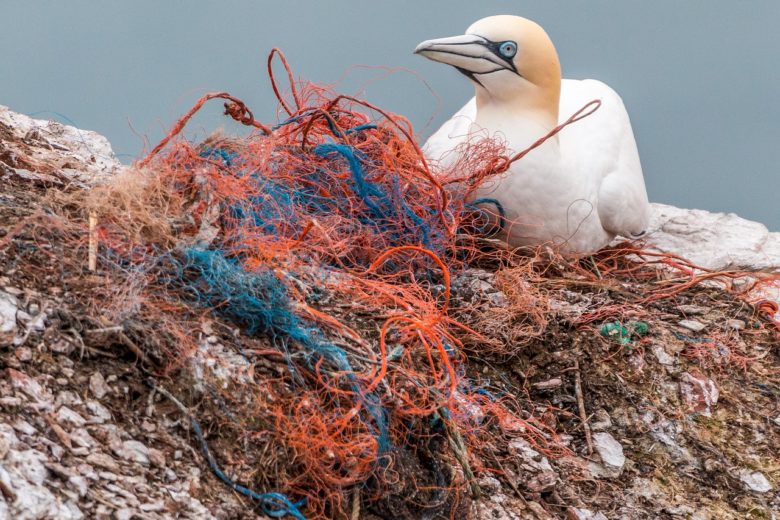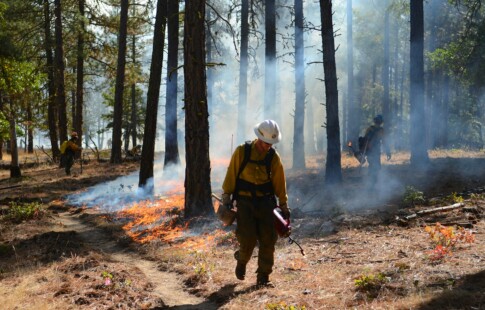
Insidious Indifference: Our Role in Marine Pollution and the Impact of Animals Eating Plastic Particles
We are reader-supported. When you buy through links on our site, we may earn affiliate commission.
As humanity’s dependence on plastic has continued to swell, so too has its ecological footprint on ocean pollution. Disposing of waste without weighing the consequences has resulted in problematic repercussions for animals eating plastic particles without realizing how it may harm them. Humanity needs to take note of our culpability in widespread marine devastation and pursue a more sustainable approach.
The Threat of Pollution and Animals Eating Plastic Particles
When we reflect on marine pollution, most of us probably envision hapless animals tangled in plastic bags or six-pack rings. While this image accurately speaks to a subset of our pollution woes, the unfortunate reality is that it’s a far more significant problem than we likely perceive.
As plastic slowly degrades, it breaks down into particles that can range from the size of a grain of rice to microscopic dimensions. Marine animals commonly mistake plastic for food and ingest it without ever knowing any better.
Once ingested, these plastic particles can damage organs and spread hazardous chemicals. These adverse conditions can subsequently climb up the food chain, destroying entire ecosystems that can, in turn, negatively affect humans.
The True Cost of Plastic Pollution
As concluded in a United Nations report on pollution, the number of species directly affected by marine debris exceeds 800. The resulting threats to human health have simultaneously cost countries billions of dollars every year. The report also revealed the ingestion of marine debris affected as many as 40% of cetaceans and 44% of seabird species.
In a study conducted by Anela Choy, an assistant professor at the Scripps Institution of Oceanography at the University of California in San Diego, remotely operated vehicles sampled water at depths ranging between approximately 20 feet and 3,000 feet. Choy and her colleagues discovered the highest concentration of plastic particles resided near the middle, between 650 feet and 2,000 feet — the level at those depths amounted to nearly four times what the team recorded near the surface.
Though various well-meaning organizations have launched several campaigns to skim plastic from the ocean’s surface, Choy’s study demonstrates such efforts likely wouldn’t be capable of reaching a significant portion of the plastic particles found in deeper waters.
Another study from Mark Browne detailed an experiment with blue mussels to see whether or not animals would excrete the plastic particles they ate. After placing the mussels in tanks spiked with plastic particles smaller than a human red blood cell, Browne found the plastic particles remained in their bodies after six weeks of examination.
The fact that plastic particles are present in marine life is unsettling enough, but knowing these particles linger and cause internal damage is even more troubling.
How Far Does the Problem of Plastic Particles Extend?
While we tend to localize the troubling impact of plastic pollution and assume densely populated areas are at a predominantly higher risk for unchecked waste, the reality is that the problem of plastic pollution is far more encompassing. Henderson Island, a remote stretch of land in the eastern part of the South Pacific, provides an alarming and harrowing example — though no humans live on the island, researchers estimate as much as 13,000 pieces of plastic infiltrate its shores daily. Despite it being an uninhabited coral atoll, scientists have found Henderson Island has the highest density of anthropogenic pollutants in the world, with virtually all of it consisting of plastic debris.
To raise public awareness of the issues regarding plastic pollution, Ben Lecomte attempted to swim across the Pacific Ocean on June 5, 2018 — the distance would have covered a world record total of 5,530 miles. Motivated by his love for the ocean, Lecomte set out with a team who gathered samples from the water as he swam. After starting in Tokyo, Lecomte and his crew had to stop in Oahu, Hawaii, after bad weather damaged their boat.
During their journey, Lecomte reportedly saw at least one piece of plastic in the ocean every three minutes. At various points, he would be swimming with wildlife, only to stumble across floating mounds of plastic a few minutes later. Concerned for the animals eating plastic and ingesting various toxins, Lecomte stressed the importance of taking action, stating on a blog he and his team maintain, “The ocean is in peril right now. If we don’t do something that is going to reverse that in the next few years, then it’s going to be much more difficult.”
What Steps Can We Take Toward Improving Conservation Efforts?
Change can begin to take root right from the comforts of your home. The devastation of plastic pollution is often daunting to reflect on, but a willingness to alter your lifestyle to reduce our ecological footprint can go a long way.
It is essential to reshape our perspective on pollution and actively seek to overcome our culture of convenience by discontinuing wasteful practices of squandering single-use plastics. Minimizing our dependence on anything with plastic packaging and recycling as much as possible are excellent starting points for limiting the amount of plastic we dump into our oceans.
The damaging impact on our oceans is undeniable, but the labor of sustainability for our planet is a collective responsibility we must share.
Without a voice of their own, marine animals need us to intervene as advocates striving to ensure their survival. Many may be ignorant of the damaging behaviors they’ve exhibited, so with a sensitive understanding, you can guide them toward practices that will improve conservation efforts.
Take a Stance Against Plastic Pollution
While awareness of plastic pollution is vital, action is the only thing capable of rectifying the issue. The sheer volume of adverse conditions plastic particles cause demands we intervene on behalf of our world — humanity should feel compelled to clean up its act.
Share on
Like what you read? Join other Environment.co readers!
Get the latest updates on our planet by subscribing to the Environment.co newsletter!
About the author

Jane Marsh
Starting from an early age, Jane Marsh loved all animals and became a budding environmentalist. Now, Jane works as the Editor-in-Chief of Environment.co where she covers topics related to climate policy, renewable energy, the food industry, and more.





